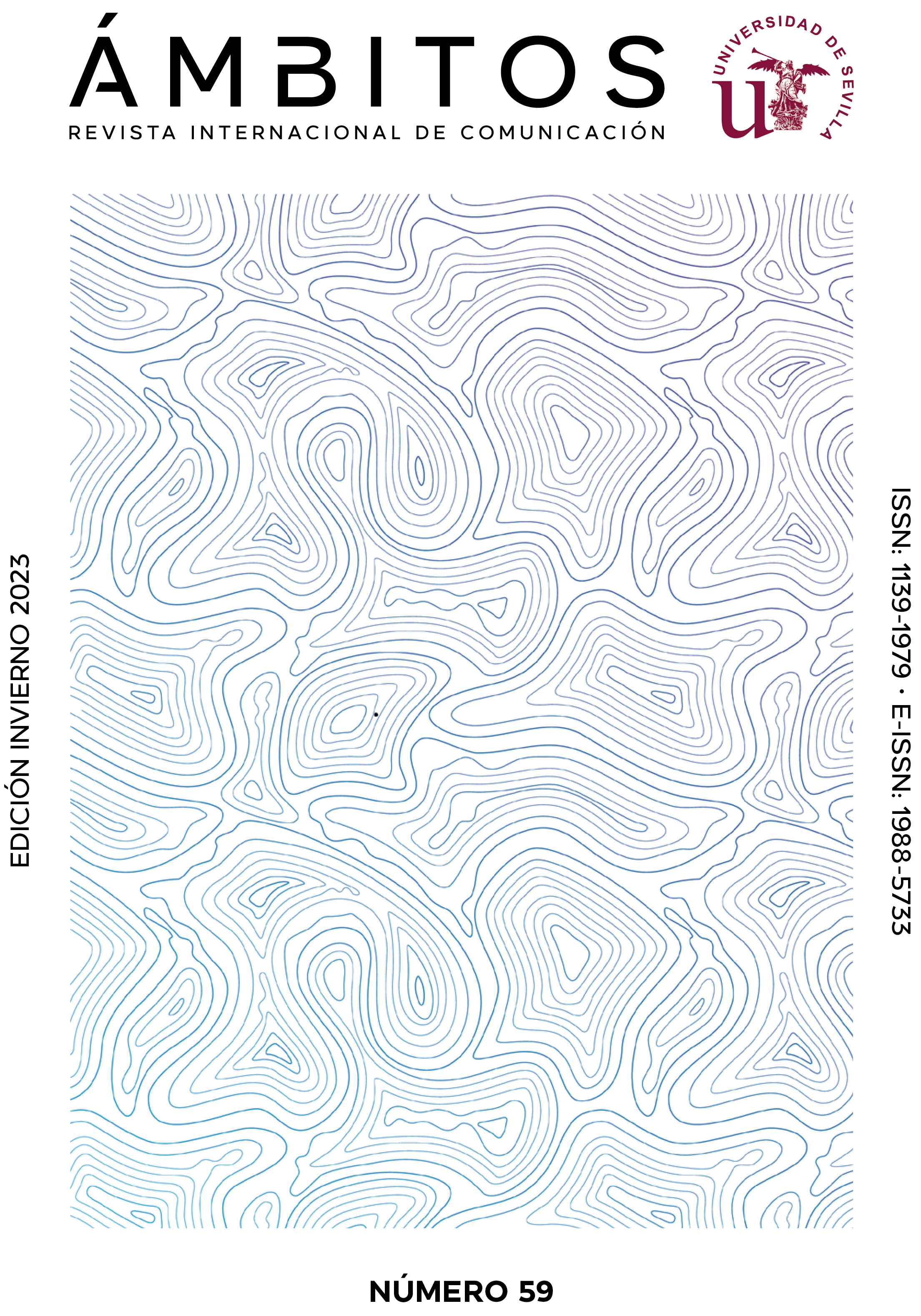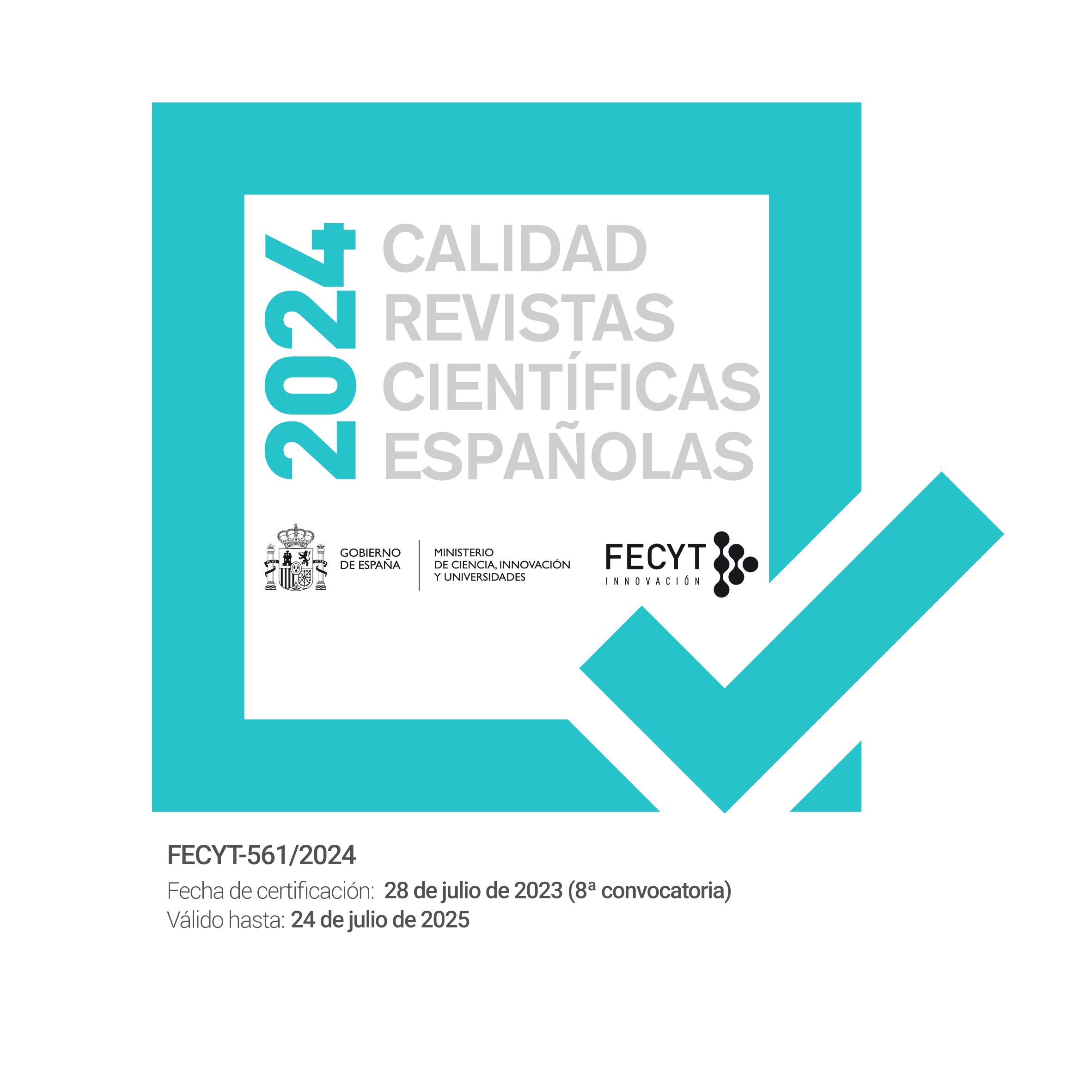Netflix’s Maid and representations of masculinities through social class: a textual analysis
DOI:
https://doi.org/10.12795/Ambitos.2023.i59.05Keywords:
Maid, masculinities, social class, textual analysis, hegemonyAbstract
Netflix’s Maid chronicles the struggles of a heterosexual White single mother living in the Pacific Northwest of the United States. Using the concept of hegemonic masculinities and qualitative textual analysis, this study examined the 10 episodes of the limited series Maid to document the social construction of working-class and middle-class masculinities. Sean’s dysfunctional working-class life of six packs of beer and a single-wide trailer are juxtaposed against Nate’s offer of tidy suburban middle-class comfort and safety. I argue the program reifies stereotypical portrayals of working-class and middle-class men based on their homes, jobs, family background, leisure activities, and use of alcohol and drugs. Sean does not respect Alex’s bodily autonomy, her need for financial independence, or her need for freedom from emotional abuse. Similarly, Nate is unable to see past his entitlement toward Alex based on the material benefits he offers her like a reliable loaner vehicle, a clean two-story home, and pony rides for her daughter. I contend that Alex, the main protagonist, contests hegemonic masculinities to create her own space in the world without limitations dictated by the men in her life. Documenting how Maid tells the story of a woman and her romantic partners oppressed by hegemonic masculinities can provide insight into commonsense notions of romantic partnerships in the United States today.
Downloads
References
Beynon, J. (2004). The commercialization of masculinities: From the ‘new man’ to the ‘new lad.’ In: C. Carter & L. Steiner (Eds.), Critical readings: Media and gender (pp. 198-217). Open University Press.
Butsch, R. (1992). Class and gender in four decades of television situation comedy: Plus ça change… Critical Studies in Mass Communication, 9(4), 387-399.
https://doi.org/10.1080/15295039209366841
Butsch, R. (2011). Ralph, Fred, Archie, Homer, and the King of Queens: Why television keeps re-creating the male working-class buffoon. In G. Dines & J. M. Humez (Eds.), Gender, race, and class in media: A critical reader (3rd ed., pp. 101-110). Sage.
Connell, R. (2016). Masculinities in global perspective: Hegemony, contestation, and changing structures of power. Theor Soc, 45, 303-318.
https://doi.org/10.1007/s11186-016-9275-x
Connell, R. & Messerschmidt, J. W. (2005). Hegemonic masculinity: Rethinking the concept. Gender & Society, 19(6), 829-859.
https://doi.org/10.1177/0891243205278639
Dow, B. J. (1990). Hegemony, feminist criticism, and The Mary Tyler Moore Show. Critical Studies in Mass Communication, 7(3), 261-274.
https://doi.org/10.1080/15295039009360178
Dow, B. J. (1992). Femininity and feminism in Murphy Brown. Southern Communication Journal, 57(2), 143-155.
https://doi.org/10.1080/10417949209372860
Kaplan, D., Rosenmann, A. & Shuhendler, S. (2017). What about nontraditional masculinities? Toward a quantitative model of therapeutic new masculinity ideology. Men and Masculinities, 20(4), 393-426. https://doi.org/10.1177/1097184X16634797
Katz, J. (2011). Advertising and the construction of violent White masculinity: From BMWs to Bud Light. In: G. Dines & J. M. Humez (Eds.), Gender, race, and class in media: A critical reader (3rd ed., pp. 261-269). Sage.
Land, S. (2019). Maid: Hard work, low pay, and a mother’s will to survive. Hachette Books.
McKee, A. (2003). Textual analysis: A beginner’s guide. Sage.
Mastrocola, D. (2017). Performing class: Gilmore Girls and a classless neoliberal ‘middle class.’ Studies in Popular Culture, 39(2), 1-22. http://www.jstor.org/stable/44779928
Messerschmidt, J. W. (2018). Hegemonic masculinity: Formulation, reformation, and amplification. Rowman & Littlefield.
Morgan, D. (2004). Class and masculinity, In M. S. Kimmel, J. Hearn, & R. W. Connell (Eds.), Handbook of studies on men and masculinities (pp. 165-177). Sage.
Newitz, A. (1997). White savagery and humiliation: A new racial consciousness in the media. In M. Wray & A. Newitz (Eds.), White trash: Race and class in America (pp. 131-154). Routledge.
Otterson, J. (2022, February 14). ‘Maid’ creator Molly Smith Metzler inks Netflix overall deal. Variety.
https://bit.ly/3FAn9UO
Painter, C. & Ferrucci, P. (2019). Taking the white gloves off: The portrayal of female journalists on Good Girls Revolt. Journal of Magazine Media, 19(2), 50-71.
https://www.muse.jhu.edu/article/741602
Sheehan, S. T. (2010). «Pow! Right in the Kisser»: Ralph Kramden, Jackie Gleason, and the emergence of the frustrated working-class man. The Journal of Popular Culture, 43(3), 564-582.
https://doi.org/10.1111/j.1540-5931.2010.00758.x
U. S. Department of Justice. (2011, October). National survey of children’s exposure to violence.
https://www.ojp.gov/pdffiles1/ojjdp/232272.pdf
Published
How to Cite
Issue
Section
License
Copyright (c) 2023 Melissa Boehm

This work is licensed under a Creative Commons Attribution-NonCommercial-ShareAlike 4.0 International License.
Ámbitos. Revista Internacional de Comunicación is an open access journal, which means that all content is freely available at no charge to the user or their institution. Users may read, download, copy, distribute, distribute, print, search or link to the full text of articles, or use them for any other lawful purpose, without seeking prior permission from the publisher or author. This definition of open access is in accordance with the Budapest Open Access Initiative (BOAI).

Unless otherwise noted, all content in the electronic edition is distributed under a "Creative Commons Attribution-NonCommercial-ShareAlike 4.0 International License". You can consult the informative version and legal text of the licence here. This should be expressly stated in this way where necessary.
In case of acceptance of the manuscript, the authors cede the rights of the work for its publication to Ámbitos. Revista Internacional de Comunicación under the Attribution-NonCommercial-ShareAlike 4.0 International license contract (CC BY-NC-SA 4.0). The authors retain copyright and third parties are authorised to copy, distribute and make use of the work, provided they comply with the terms and conditions set out in the licence
- Cite the authorship and the original source of publication (journal, publisher and URL of the work).
- Do not use them for commercial purposes.
- If you remix, transform or create from the material, you must release your contributions under the same license as the original.
More information can be found at https://creativecommons.org/licenses/by-nc-sa/4.0/deed.es


















